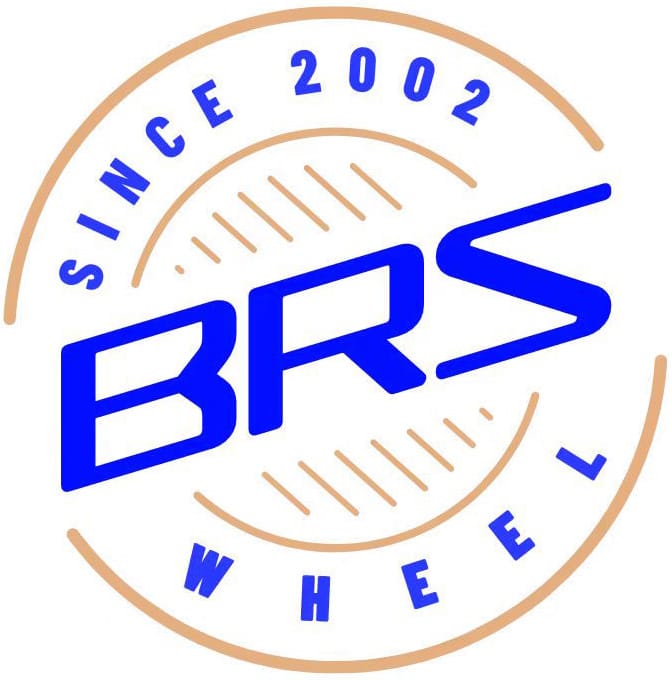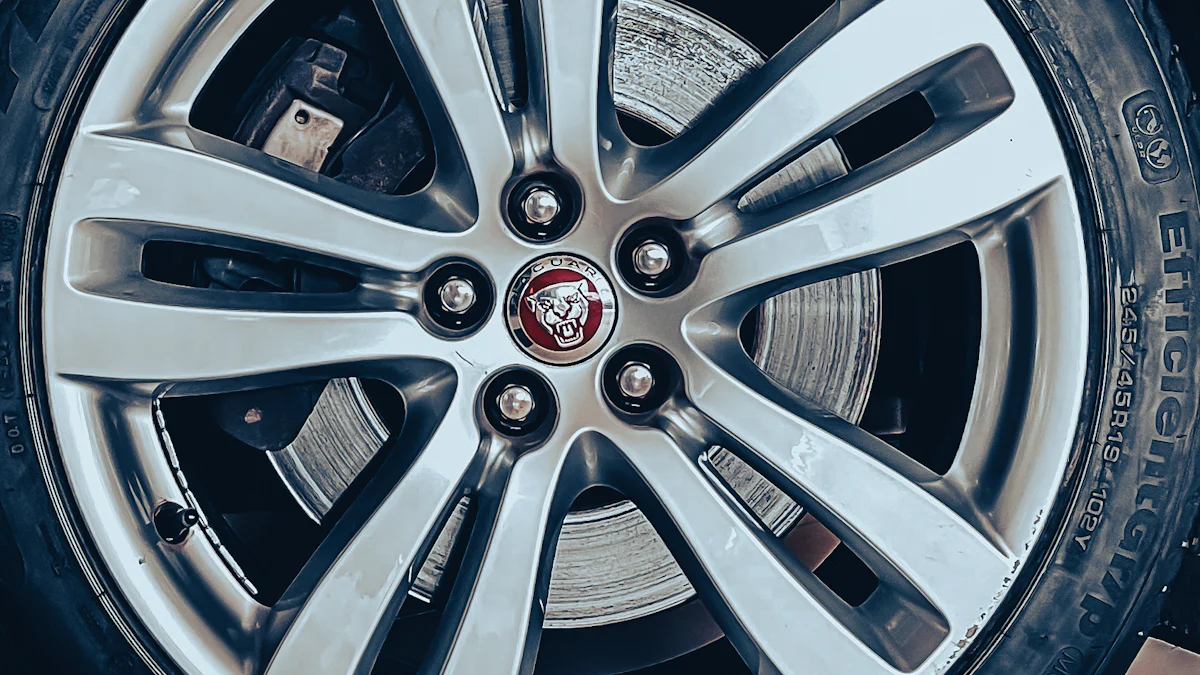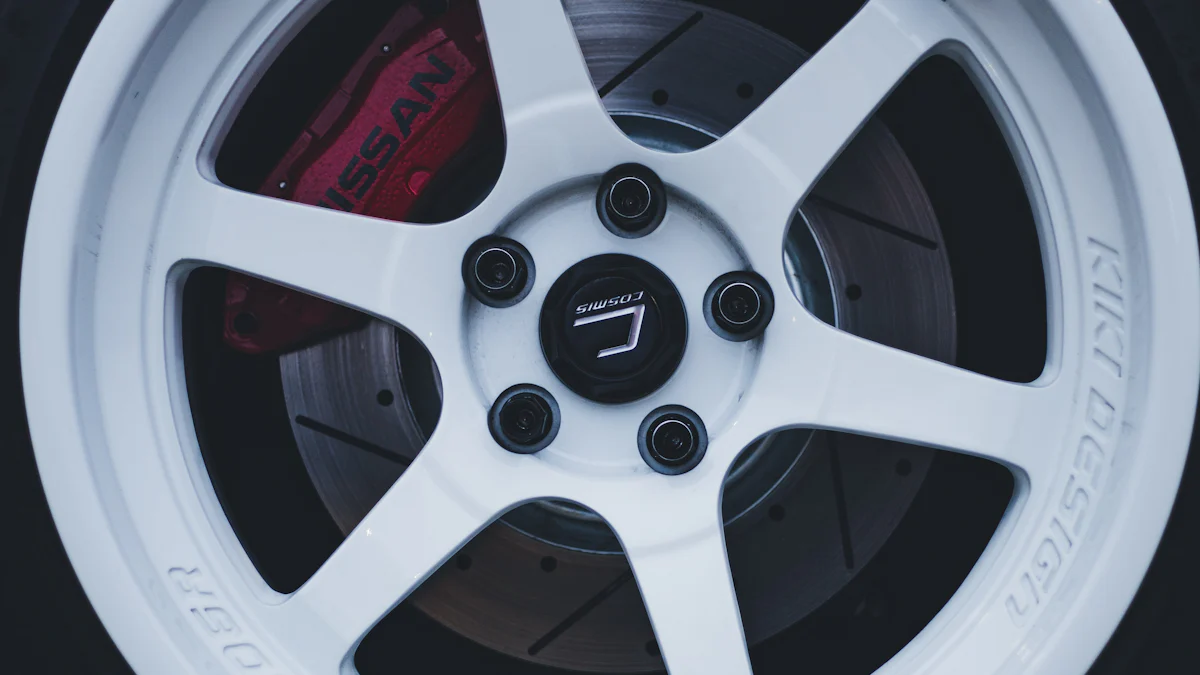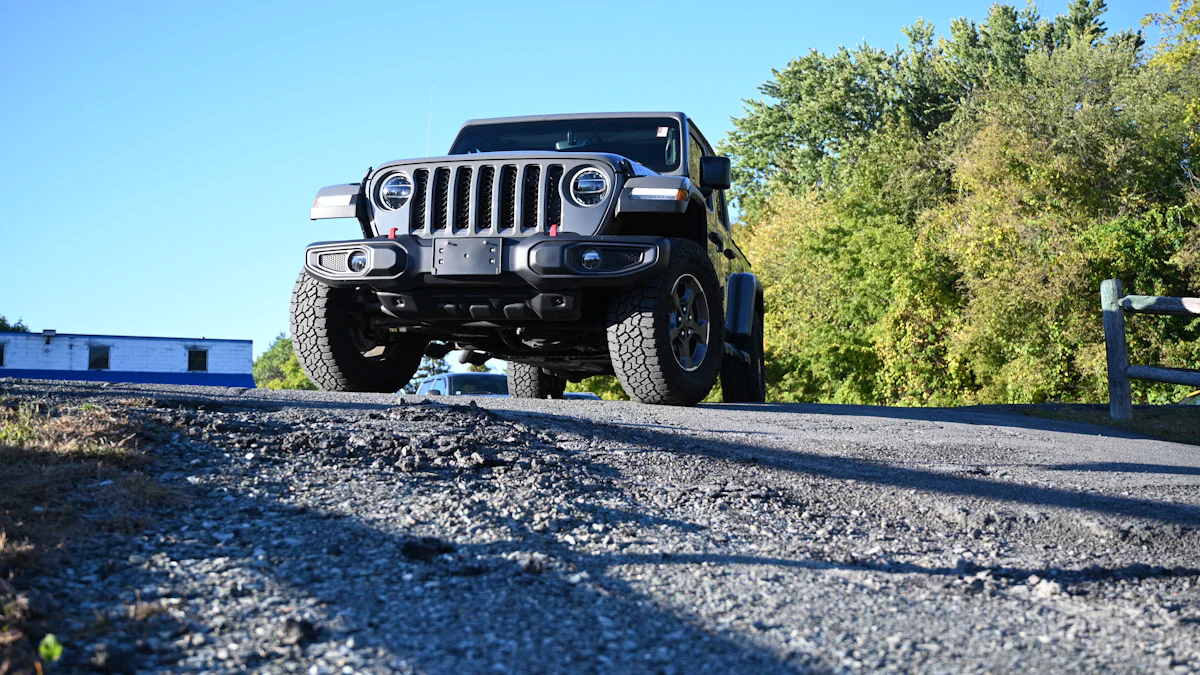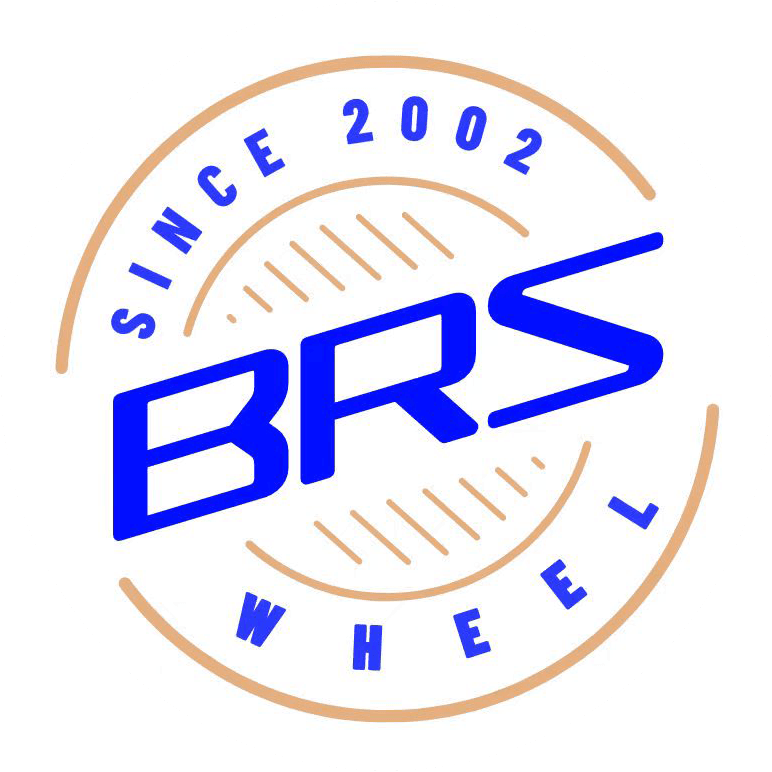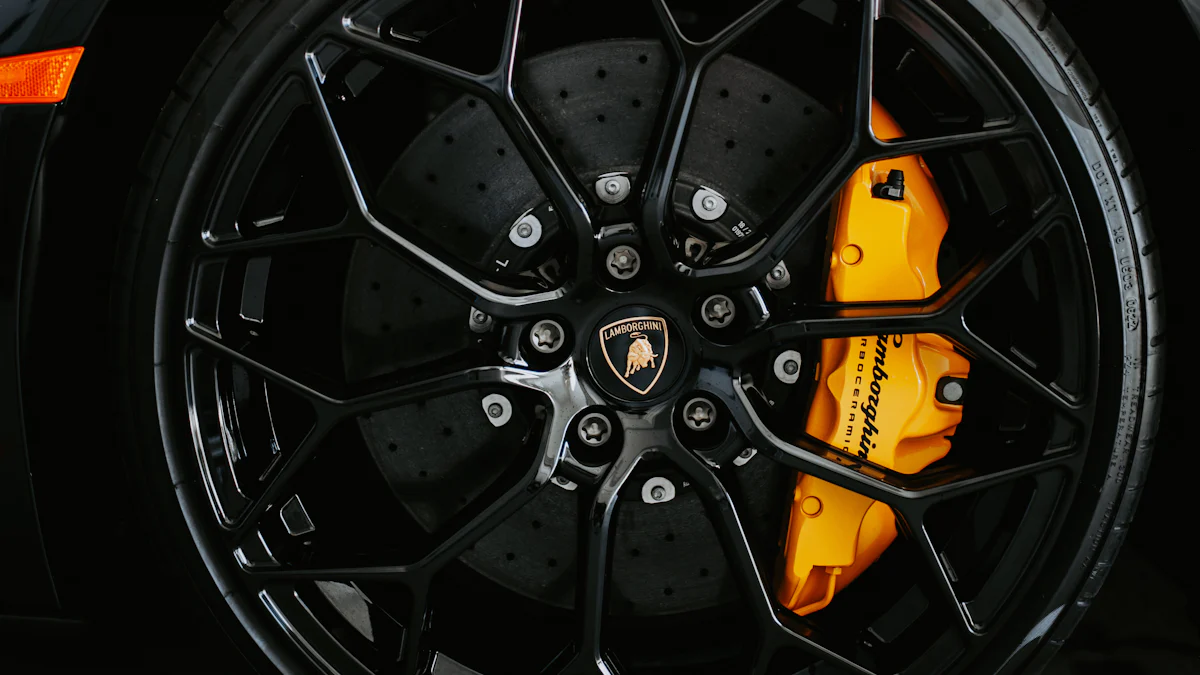
Choosing the right 15×8 wheel for your car plays a crucial role in enhancing your vehicle’s performance, safety, and appearance. A properly selected wheel improves handling by ensuring better traction and stability, especially when paired with wider tires. It also optimizes fitment, reducing the risk of rubbing against suspension components or brake calipers. Beyond functionality, the 15×8 wheel offers a stylish upgrade, allowing you to customize your car’s look while maintaining practicality. Whether you prioritize aesthetics or performance, the right wheel choice transforms your driving experience into something more enjoyable and reliable.
Key Takeaways
- Choosing the right 15×8 wheel enhances your car’s performance, safety, and appearance, making your driving experience more enjoyable.
- Understanding wheel specifications like offset, backspacing, bolt pattern, and center bore is crucial for ensuring proper fitment and avoiding issues.
- A 15×8 wheel improves handling and stability by allowing for better weight distribution and traction, especially when paired with wider tires.
- Selecting a wheel from a certified manufacturer, such as BRS Auto Parts, ensures quality and reliability, reducing the risk of defects.
- Accurate measurements of your vehicle’s wheel well space and brake clearance are essential to prevent rubbing and ensure smooth operation.
- Consider your driving needs—whether for daily use or performance—to choose the right wheel that balances comfort and functionality.
- Explore various stylish designs and finishes available for 15×8 wheels to customize your vehicle while maintaining practicality.
Understanding the Basics of a 15×8 Wheel

When selecting a 15×8 wheel, understanding its fundamental aspects ensures you make an informed decision. This section breaks down the key elements to help you grasp the basics.
What Does 15×8 Mean?
The term “15×8” refers to the wheel’s size. The first number, 15, indicates the diameter of the wheel in inches. This measurement determines the size of the tire that fits the wheel. The second number, 8, represents the width of the wheel in inches. A wider wheel, like an 8-inch width, provides better stability and traction, especially when paired with performance tires. For example, wheels such as the American Racing AR23 rims feature a 15×8 size, offering a balance between performance and aesthetics.
Choosing the correct size is essential for compatibility with your vehicle. A 15×8 wheel works well for many cars, but you must ensure it fits your specific model without causing issues like rubbing against suspension components or brake calipers.
Key Wheel Specifications to Consider
Offset and Backspacing
Offset and backspacing are critical factors in determining how a wheel sits on your car. Offset measures the distance between the wheel’s mounting surface and its centerline. It can be positive, negative, or zero. For instance, a 15×8 wheel with a -19mm offset, like the AR23 rims, pushes the wheel outward, giving your car a more aggressive stance. On the other hand, a 35mm offset, as seen in some models, keeps the wheel closer to the car’s body, which suits vehicles requiring a more conservative fit.
Backspacing measures the distance from the wheel’s mounting surface to the back edge of the wheel. A 3.75-inch backspace, common in many 15×8 wheels, ensures proper clearance for brake calipers and suspension components. Always verify these measurements to avoid fitment issues.
Bolt Pattern and Center Bore
The bolt pattern refers to the number of lug holes and their arrangement on the wheel. For example, a 5×114.3 bolt pattern means the wheel has five lug holes spaced 114.3 millimeters apart. Matching the bolt pattern to your vehicle is crucial for proper installation.
The center bore is the hole in the middle of the wheel that fits over the hub of your car. A correctly sized center bore ensures the wheel sits flush against the hub, providing stability and reducing vibrations. Always check your vehicle’s specifications to match these details.
Importance of Fitment for Safety and Performance
Proper fitment ensures your 15×8 wheel performs optimally and safely. A well-fitted wheel prevents rubbing against the car’s body or suspension, which could lead to damage over time. For example, a 15×8 wheel with a 4.25-inch backspace fits snugly on the front of a Maverick without rubbing, ensuring smooth operation. Additionally, correct fitment enhances handling, stability, and braking performance, making your driving experience safer and more enjoyable.
“Ensuring the right fitment is not just about aesthetics; it directly impacts your car’s safety and performance.”
By understanding these specifications, you can confidently choose a 15×8 wheel that meets your needs and complements your vehicle.
Benefits of Choosing a 15×8 Wheel
Enhanced Performance
Improved handling and stability
A 15×8 wheel significantly enhances your car’s handling and stability. The wider width of the wheel allows for better weight distribution across the tires, which improves your vehicle’s grip on the road. This is especially noticeable during sharp turns or high-speed maneuvers, where the increased contact patch provides more control. For example, drivers using a 15×8 wheel paired with a 205 tire often report smoother cornering and more responsive steering. This setup ensures that your car remains stable, even in challenging driving conditions.
Additionally, the reduced sidewall flex of tires mounted on a 15×8 wheel contributes to better feedback from the road. This means you can feel more connected to the surface beneath you, allowing for precise adjustments while driving. Whether you’re navigating winding roads or tackling a race track, the improved handling offered by a 15×8 wheel makes a noticeable difference.
Better traction with wider tires
The 15×8 wheel’s width accommodates wider tires, which translates to better traction. Wider tires create a larger contact area with the road, improving grip during acceleration, braking, and cornering. This advantage becomes particularly evident in performance-oriented vehicles or off-road conditions. For instance, a 15×8 wheel fitted with a Mickey Thompson Sidebiter II tire provides exceptional traction on rugged terrains, making it a popular choice among off-road enthusiasts.
Moreover, the enhanced traction reduces the likelihood of wheel spin, especially in wet or slippery conditions. This ensures a safer and more controlled driving experience. By choosing a 15×8 wheel, you equip your car with the capability to handle diverse driving scenarios with confidence.
Aesthetic and Practical Appeal
Stylish designs and finishes
A 15×8 wheel not only boosts performance but also elevates your car’s visual appeal. These wheels come in a variety of stylish designs and finishes, allowing you to customize your vehicle’s look. From polished chrome to matte black, the options cater to different tastes and preferences. For example, the American Racing AR23 rims in a 15×8 size offer a sleek and aggressive design that complements both classic and modern cars.
The aesthetic upgrade provided by a 15×8 wheel enhances your car’s overall appearance, making it stand out on the road. Whether you prefer a bold statement or a subtle enhancement, the wide range of designs ensures you find a wheel that matches your style.
Versatility for various tire sizes and driving conditions
The 15×8 wheel’s versatility makes it suitable for a wide range of tire sizes and driving conditions. You can pair it with tires designed for daily commuting, performance driving, or off-road adventures. For instance, a 15×8 wheel with a 205 tire offers a balanced setup for city driving, while a 15×8 wheel with a 255 tire provides the extra grip needed for high-performance applications.
This adaptability ensures that the 15×8 wheel meets your specific driving needs. Whether you’re navigating urban streets, cruising on highways, or exploring off-road trails, the 15×8 wheel delivers reliable performance. Its ability to accommodate different tire sizes also makes it a practical choice for drivers who want flexibility without compromising on quality.
Practical Tips for Selecting the Right 15×8 Wheel

Assessing Your Vehicle’s Compatibility
Measuring wheel well space and brake clearance
Before purchasing a 15×8 wheel, you need to measure your vehicle’s wheel well space and brake clearance. These measurements ensure the wheel fits properly without causing interference. Start by checking the available space in the wheel well. Use a measuring tape to determine the distance between the suspension components and the inner edge of the wheel well. This step helps you avoid issues like rubbing or restricted movement.
Next, inspect the brake calipers. The wheel must clear the brake components to function safely. Place a straight edge across the hub and measure the distance to the outermost part of the brake caliper. Compare this measurement with the backspacing of the wheel you plan to buy. Proper clearance ensures smooth operation and prevents damage to both the wheel and braking system.
“Accurate measurements are the foundation of a safe and functional wheel upgrade.”
Consulting your car’s manual or a professional
Your car’s manual is an invaluable resource when selecting a 15×8 wheel. It provides detailed specifications, including bolt pattern, offset, and center bore size. These details help you choose a wheel that matches your vehicle’s requirements. If you’re unsure about interpreting the manual, consult a professional. Automotive experts can guide you through the process, ensuring compatibility and optimal performance.
Many professionals also use advanced tools to simulate fitment, saving you time and potential errors. Their expertise guarantees that the wheel you select enhances your car’s safety and handling.
Balancing Budget and Quality
Finding affordable yet reliable options
Balancing cost and quality is essential when choosing a 15×8 wheel. Affordable options exist, but you must prioritize reliability. Look for wheels made from durable materials like steel or alloy. These materials offer strength and longevity without breaking the bank. Research brands known for producing high-quality wheels at reasonable prices.
Online reviews and customer testimonials can provide insights into a wheel’s performance and durability. For example, many drivers recommend wheels with a powder-coated finish for their resistance to corrosion and wear. By focusing on value rather than just price, you can find a wheel that meets your needs without compromising safety.
Importance of certified manufacturers like BRS Auto Parts
Choosing a certified manufacturer ensures you receive a product that meets industry standards. Companies like BRS Auto Parts specialize in producing high-quality wheels. Their adherence to certifications like IATF 16949 guarantees that their products undergo rigorous testing for safety and performance. BRS Auto Parts also invests in advanced manufacturing techniques, such as automated production lines and 3D analysis, to deliver reliable wheels.
“Certified manufacturers prioritize quality, giving you peace of mind with every purchase.”
By selecting a trusted brand, you reduce the risk of defects and ensure your investment lasts for years.
Considering Driving Needs
Daily driving vs. performance use
Your driving habits play a significant role in selecting the right 15×8 wheel. For daily driving, prioritize comfort and durability. Wheels designed for city use often feature conservative offsets and standard finishes, making them practical and low-maintenance. They pair well with all-season tires, providing a smooth ride in various conditions.
For performance use, focus on wheels that enhance handling and traction. A 15×8 wheel with a wider offset and lightweight construction improves responsiveness during high-speed maneuvers. Pair these wheels with performance tires to maximize grip and stability. Whether you’re racing or tackling winding roads, performance-oriented wheels elevate your driving experience.
Weather and road conditions
Consider the weather and road conditions you encounter most often. In wet or snowy climates, opt for wheels with corrosion-resistant finishes. Powder-coated or painted wheels withstand harsh elements better than polished ones. For off-road adventures, choose wheels with reinforced construction to handle rugged terrains.
If you frequently drive on uneven roads, prioritize wheels with a robust design. These wheels resist damage from potholes and debris, ensuring longevity. Matching your wheel choice to your environment guarantees safety and reliability.
FAQ
Can I use 33-inch tires on 15×8 wheels?
Yes, you can use 33-inch tires on 15×8 wheels, but the width of the tire matters more than its height. For instance, tires with widths like 10.5, 12.5, or 13.5 inches can fit on 15×8 wheels, but they may cause issues such as sidewall bulging or uneven wear. To avoid these problems, ensure the tire width aligns with the wheel’s specifications. Consulting a professional or referring to your vehicle’s manual can help you make the right choice.
What is the best tire size for a 15×8 wheel on a classic car like a 1968 Dart?
A 15×8 wheel may not be ideal for the front of a classic car like a 1968 Dart, especially if you aim to keep the front end low. Many experts recommend using a narrower wheel, such as a 15×7, paired with a 205-width tire. This combination provides better clearance and avoids rubbing against suspension components or fenders. Always measure your wheel well space and brake clearance before making a decision.
What is the maximum tire size for 15×8 wheels?
The maximum tire size for 15×8 wheels depends on your vehicle and its setup. For example, some trucks with 15×8 Cragar S/S wheels use 275/60/15 tires without any issues. However, larger tires may require adjustments to the suspension or fenders to prevent rubbing. Always test fit the tires and wheels to ensure proper clearance and functionality.
Will a 15×8 wheel with a 4.25-inch backspace fit the front of a Ford Maverick?
Yes, a 15×8 wheel with a 4.25-inch backspace can fit the front of a Ford Maverick without rubbing, provided you use an appropriate tire size like 225/60. This setup offers a balanced look and ensures smooth operation. However, always double-check the measurements of your wheel well and brake components to confirm compatibility.
Pro Tip: “When selecting wheels for classic cars, prioritize fitment and clearance to avoid unnecessary modifications.”
What should I consider when choosing the offset for 15×8 wheels?
Offset plays a crucial role in how your wheels fit and perform. A negative offset, such as -19mm, creates a deeper dish and pushes the wheel outward, giving your car an aggressive stance. However, this may lead to interference with the outer fender. On the other hand, a positive offset keeps the wheel closer to the car’s body but risks interference with suspension components like strut tubes. For example, if your 15×8 wheels with a 0mm offset are almost rubbing the outer fender, switching to a positive offset can help. Always balance aesthetics with functionality when choosing the offset.
Can I use 15×8 wheels for daily driving and off-road adventures?
Yes, 15×8 wheels are versatile enough for both daily driving and off-road use. For daily driving, pair them with all-season tires for comfort and durability. For off-road adventures, use reinforced tires like Mickey Thompson Sidebiter II to handle rugged terrains. Ensure the wheels and tires match your driving needs and vehicle specifications for optimal performance.
How do I ensure my 15×8 wheels fit without rubbing?
To avoid rubbing, measure your wheel well space and brake clearance accurately. Use a measuring tape to check the distance between the suspension components and the inner edge of the wheel well. Compare these measurements with the backspacing and offset of the wheel. For example, a 15×8 wheel with a 3.75-inch backspace often fits well without causing interference. If you’re unsure, consult a professional for guidance.
Key Takeaway: “Accurate measurements and proper planning prevent fitment issues and enhance your driving experience.”
Are there specific brands or manufacturers you recommend for 15×8 wheels?
Yes, choosing a reliable manufacturer ensures quality and safety. Brands like BRS Auto Parts specialize in high-quality steel wheels and adhere to certifications like IATF 16949. Their advanced manufacturing techniques and rigorous testing guarantee durable and reliable products. Opting for certified manufacturers reduces the risk of defects and ensures long-term satisfaction.
By addressing these common questions, you can confidently select the right 15×8 wheels for your car while avoiding potential pitfalls.
Understanding wheel sizing and specifications is essential when selecting the right 15×8 wheel for your car. This knowledge ensures you achieve optimal performance, safety, and style. A 15×8 wheel enhances handling, provides better traction, and offers versatile options for various driving conditions. Its aesthetic appeal also allows you to personalize your vehicle while maintaining practicality. To make the best choice, consult professionals or explore trusted manufacturers like BRS Auto Parts, known for their certified, high-quality products. By doing so, you can confidently upgrade your car and enjoy a superior driving experience.
FAQ
What’s the advantage of using a 15×8 wheel with a 205 tire?
Using a 15×8 wheel with a 205 tire offers several performance benefits. The slight stretch of the tire on the wider wheel enhances feedback during driving, especially on the track. This setup improves turn-in response, giving you sharper and more precise handling. Additionally, the reduced sidewall flex maintains stability while cornering. If you’re looking for a balance between comfort and performance, this combination provides an excellent solution.
What tire size works best with a 15×8 front wheel?
For a 15×8 front wheel with a 3-3/4″ backspace, a 225/60 tire is a popular choice. This size fits well on vehicles like a 1968 Dart with upgraded disc brakes and ensures the front end remains low without rubbing. Always measure your wheel well space and brake clearance to confirm compatibility before making a purchase.
How well does a 15×8 wheel fit on a 1992 Miata?
A 15×8 wheel fits nicely on a 1992 base Miata, offering both aesthetic and functional upgrades. To ensure proper fitment, choose a backspacing of around 4 inches. This setup avoids interference with suspension components and provides a clean, flush look. If you’re upgrading from stock wheels, you’ll notice improved stability and a more aggressive stance.
How do tire sizes work?
Tire sizes can seem confusing at first, but they follow a logical structure. For example, a tire labeled 33×12.50R15 has a diameter of 33 inches, a width of 12.50 inches, and fits a 15-inch wheel. The aspect ratio, represented as a percentage, indicates the height of the sidewall relative to the width. A lower aspect ratio, such as 30%, means a shorter sidewall, which improves handling but reduces comfort. Understanding these measurements helps you select the right tire for your 15×8 wheels, ensuring optimal performance and fitment.
What is the maximum tire size for 15×8 wheels?
The maximum tire size for 15×8 wheels depends on your vehicle and its setup. Many drivers successfully use P-255 tires on 15×8 wheels without issues. For larger tires, such as 275/60, adjustments like spacers or modifications to the fenders may be necessary. Always test fit the tires to ensure proper clearance and functionality.
Can you use 33-inch tires on 15×8 wheels?
Yes, you can use 33-inch tires on 15×8 wheels, but the width of the tire is critical. Tires with widths like 10.5, 12.5, or 13.5 inches can fit, but they may cause sidewall bulging or uneven wear. To avoid these issues, ensure the tire width aligns with the wheel’s specifications. Consulting a professional can help you make the best choice for your setup.
What are the considerations for tire sizes on 15×8 wheels?
When selecting tire sizes for 15×8 wheels, focus on the width and aspect ratio. A 275/60 tire fits well but may require adjustments like spacers depending on your car’s rear setup. For most vehicles, a 15×8 wheel with 4 inches of backspacing provides optimal fitment for a variety of tire sizes. Always prioritize proper clearance to avoid rubbing or interference.
Why choose a 15×9 wheel over a 15×8?
A 15×9 wheel offers a wider platform, which can accommodate larger tires for increased traction and stability. However, if you’re limiting the tire width to 205 or 215, the benefits of a 15×9 wheel diminish. In such cases, a 15×8 wheel provides a better balance between performance and aesthetics, especially for daily driving or light track use.
What should you consider when getting 15-inch wheels?
When upgrading to 15-inch wheels, ensure they clear your brake calipers and suspension components. Some setups may require minor modifications, such as grinding down parts of the caliper for proper clearance. Always measure your vehicle’s wheel well space and consult your car’s manual or a professional to confirm compatibility.
How do you ensure 15×8 wheels fit without rubbing?
To avoid rubbing, measure the available space in your wheel well and check the clearance around your brake components. Compare these measurements with the backspacing and offset of the wheel. For example, a 15×8 wheel with a 3.75-inch backspace often fits well without interference. Proper planning and accurate measurements ensure a smooth installation process.
Pro Tip: Always test fit your wheels and tires before finalizing your purchase to avoid unexpected issues.
Related News
- Posted In:General
